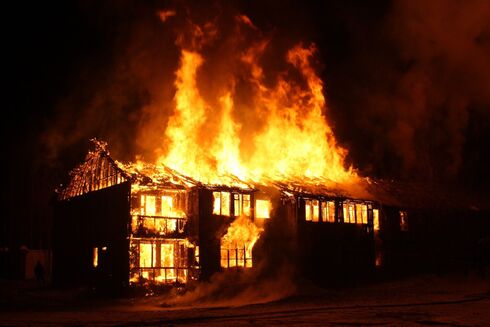
Are you under-insured?
1 March 2022

Imagine if part or all of your premises were destroyed in an emergency event but your insurance cover did not meet the costs of re-building by a significant amount. How would your business cope?
The sharp rises in the cost of materials and construction services over the past year following the bounce-back mean that such a situation could occur without a company or individual realising it.
Buildings, whether homes or hire depots, should obviously be insured for the amount it would cost to re-build them. However, the rapid increases in costs could result in the figure becoming quickly outdated.
“Some policies have an element of annual index-linking of around a few percent, but not to the extent of the construction price rises that we’ve all been hearing about over recent months,” Anders McLocklan, development director with Towergate Insurance Brokers tells me.
Towergate, which is the sole broker for insurance services offered to HAE members as well as business throughout industry generally, provides several sources of advice on under-insurance.
These include a free desktop general insurance valuation tool, a paid-for online valuation service, or a full survey and report by an RICS (Royal Institution of Chartered Surveyors) regulated surveyor. At the very least it provides peace of mind.
“It’s been estimated that 80% of buildings do not have the correct building sum insured, and 90% of those are under-insured,” says Anders. “And the average degree of under-insurance is 40%.”
Under-insurance can arise because of something known as the ‘average clause’ being applied. This is where the insurance company has found the value-insured sum to be incorrect against their own valuation. The clause exists to ensure that someone does not get a full insurance payout when they have only paid part of the premium.
As an example, if fire causes damage requiring £100,000 to repair and the building’s declared reinstatement insurance value is £1 million, it would seem the cover is more than adequate.
However, if the insurance company finds that the actual rebuild cost would be £1.2 million, they can claim that the cover is inadequate and reduce it by the same proportion of the under-insurance.
Some insurers have conditions such that averaging will only be applied if the under-insurance falls below a certain percentage.
“I’d be surprised if many properties in the UK would cost the same to reinstate as it would have 12 months ago,” says Anders.
“My Towergate Insurance Brokers colleague Jeff Partridge recently gave the example of a property in South Wales with a reinstatement cost of £250,000 and a market value of £125,000. The increased cost of materials may uplift the actual reinstatement cost by 20% from £250k to £300k. If we set the declared value at risk at £125,000 the insurance settlement would at the most be (£125,000/£300,000 = 41%).
“41% of £125,000 is £52,000, so the policyholder would have to find £52,000 to replace a £300,000 structure – nothing short of a disaster.
“This is something that Towergate Insurance Brokers are trying to highlight to clients in order to make sure they are adequately protected. It could make the difference between a business surviving or not.”
And it’s all the more important to check if it is some years since you last examined your policy details and the sums insured.

